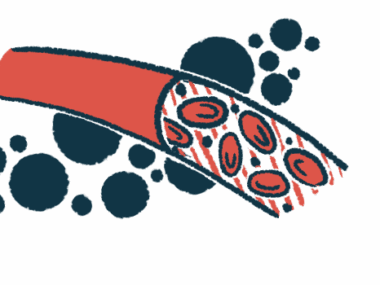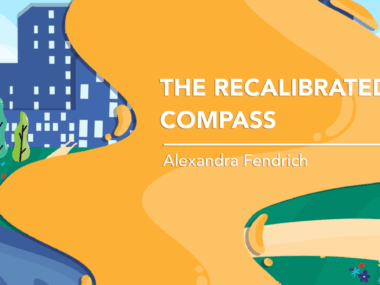On Learning to Find a Balance While Being Chronically Ill
Written by |

I left a really challenging job situation last year. The job was making me physically sicker and sicker, like the blood in my veins was slowly draining. My ankylosing spondylitis (AS) has never been as horrific as it was during my nearly two years at that job.
It wasn’t the job itself, it was the inflexibility of the company and the intensity of the commute. The commute was three or more hours every day, about 1.5 hours each way. I realize some people do this, and I know I’m not the only one. But for me and my body, it was extremely difficult.
Most of the time, I was hunched over in a crowded bus stuck in highway traffic. Sometimes I’d switch from the bus to a train, and then to the subway so that I could stay mobile on my commute rather than be sedentary on the bus. By the time I got home, I was completely and utterly zonked out.
The stress of being late to work because of extreme, unpredictable traffic (I lived in New York and worked in New Jersey, to give you a sense of the madness) started getting to me. I hated the feeling of being out of control of my life. Additionally, I was missing doctor’s appointments and workouts because of the commute. Stress quadrupled my cortisol levels, which seemed to have a direct effect on my inflammation. All I did was work, sleep, cry, and move through the pain.
I also managed, somehow — somehow — to write a book over that last year. It is called “Light Magic for Dark Times,” a collection of practices for intentional, magical living. The book is a testament to my work between moments of pain and during weekends when I could recover.
Nowadays, I’m feeling a lot better. I’d say I feel 50 to 60 percent better almost daily, except for flare-ups once or twice a month. My diclofenac, an anti-inflammatory medication to treat pain, has been working well, too. Stress management has been a godsend, which makes me wonder how many folks with AS can’t find sustainable ways to manage their stress.
Something I have slowly realized is that when I’m not in pain, and when I’m not working as a way of “celebrating” no pain, I feel guilty. It is like I’ve trained myself to work on pain-free days, rather than rest when I need it.
At times, it almost feels as though I don’t have the right to write about AS or advocate for others; as if I’m “faking it” in my disease management and am an imposter. When I’m not in pain, I feel the need to busy myself. I wrote an Instagram post about this other day. I had to permit myself to rest, free of guilt or pressure to go, go, go.
So much balance is required in life with chronic illness — we have to balance our output and our reserves. We have to make big life choices regarding work, family, and money to manage our disease. We have to continuously make changes to the way we see, and live inside the experience of our illness.
We can’t advocate for others or support ourselves if we’re not actively working toward balance in our own lives. For me, that means ignoring the voice in my head that tells me what I should or should not be doing. It means that even when I’m doing well and not feeling sick, I’m still taking care of myself so that I don’t trigger a flare-up. It means not feeling guilty for not being sick.
I am, and you are, already enough. Even if you’re feeling sick or feeling better or sleeping or working. In the end, the point is to find some center of stillness, to find a way to manage your health, to get through each day feeling good. We have to take the good (feeling minimally pain-free) and accept it, just as we have to get through the bad.
I refuse to feel guilty when I feel better because I would never want you to feel that way. And I refuse to diminish my voice just because I’m not actively feeling bad. I’d rather spend that energy doing something good, like writing this column.
We are all already faced with stigmas around disability and illness, plus lack of representation, resources, and accessibility. We are told, “You’re not enough.”
Let’s do the work to heal that internalized messaging. It can start with choosing to do what feels right to you when it feels right to you — free of guilt and self-judgment.
Learn more about my ankylosing spondylitis journey at my Instagram.
***
Note: Ankylosing Spondylitis News is strictly a news and information website about the disease. It does not provide medical advice, diagnosis, or treatment. This content is not intended to be a substitute for professional medical advice, diagnosis, or treatment. Always seek the advice of your physician or other qualified health provider with any questions you may have regarding a medical condition. Never disregard professional medical advice or delay in seeking it because of something you have read on this website. The opinions expressed in this column are not those of Ankylosing Spondylitis News, or its parent company, Bionews Services, and are intended to spark discussion about issues pertaining to ankylosing spondylitis.






Leave a comment
Fill in the required fields to post. Your email address will not be published.